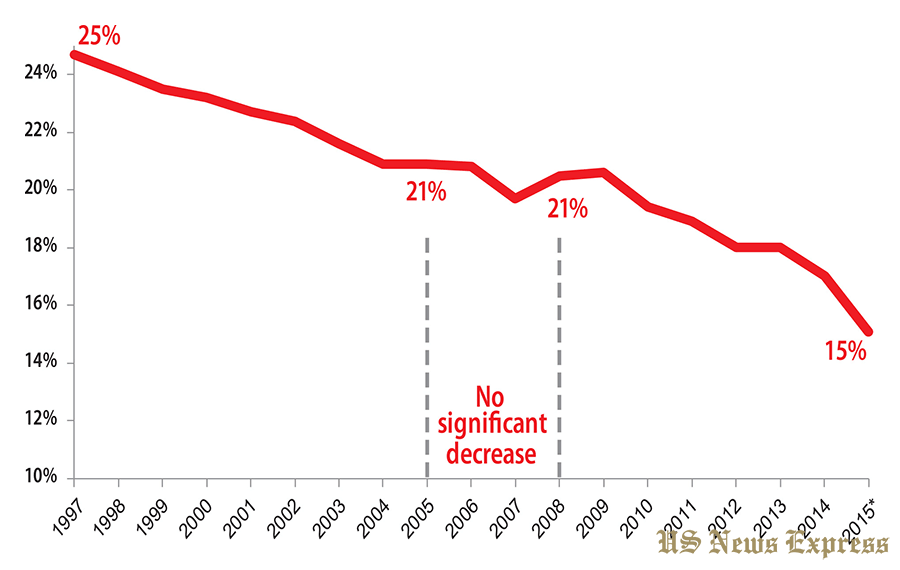Washington, D.C.–The proportions of adults and youth who smoke cigarettes have been decreasing, according to a report released today by Center for Disease Control and Prevention (CDC) on the Winnable Battles program, an effort to make the biggest health impact for the most Americans in the shortest time.

The percentage of current adult cigarette smokers decreased from 20.6% in 2009 to 15.1% in 2015, exceeding CDC’s 2015 Winnable Battle target of 17%. Youth cigarette smoking rates have also declined by almost half, from 20% in 2007 to a new low of 10.8% in 2015.
By achieving a youth cigarette smoking rate of 10.8% in 2015, which is the lowest teen cigarette smoking rate recorded since data collection began in 1991, the United States has exceeded its national Healthy People 2020 objective of reducing adolescent cigarette use to 16% or less. Per capita combustible tobacco product consumption declined from 1,342 in FY 2012 to 1,211 in FY 2015. In addition, the proportion of the U.S. population covered by a state or local comprehensive smoke free law has increased to nearly 60% of the population as of June 30, 2016.
A CDC study found that prohibiting smoking in public housing would yield annual cost savings of $153 million from averted secondhand smoke-related care, renovation expenses, and smoking-attributable fire losses.
Despite gains, nearly 40 million people in the United States currently smoke cigarettes. Cigarette smoking is responsible for more than 480,000 deaths per year in the United States, including nearly 41,000 deaths resulting from secondhand smoke exposure. Tobacco-related deaths account for about one in five deaths annually, or 1,300 deaths every day.
Winnable Battles, first launched in 2010, took on seven threats to U.S. public health where concerted effort with partners could make an immediate impact: Tobacco; Nutrition, Physical Activity and Obesity; Food Safety; Healthcare-Associated Infections; Motor Vehicle Safety; Teen Pregnancy; and HIV.


















